
Soil Mechanics and Foundation Engineering/ Dr. Ahmad Fahmi / Professional Excel Spreadsheet Designer
In the name of God /Dr. Ahmad Fahmi's Weblog
Soil Mechanics and Foundation Engineering/ Dr. Ahmad Fahmi / Professional Excel Spreadsheet Designer
In the name of God /Dr. Ahmad Fahmi's WeblogSoil Phase Relationships
Soil Mechanics Lecture
Soil phase relationships describe how solids, water, and air coexist in a given volume of soil and are essential in understanding soil behavior. These relationships are crucial for assessing characteristics like density, porosity, saturation rate, and moisture content, all of which directly impact soil’s engineering performance. By examining the proportions of solids, water, and air, engineers can determine how well the soil can support loads, retain moisture, or drain. Soil that is fully saturated has no air voids, while partially saturated soils contain both air and water within their void spaces. These relationships offer insights into soil's stability, compressibility, and permeability, which are necessary for effective design in construction and environmental applications.
Watch the Related Videos on Our YouTube Channel (in English):
Volume of air in the voids
Volume of water in the voids
Volume of soil solids
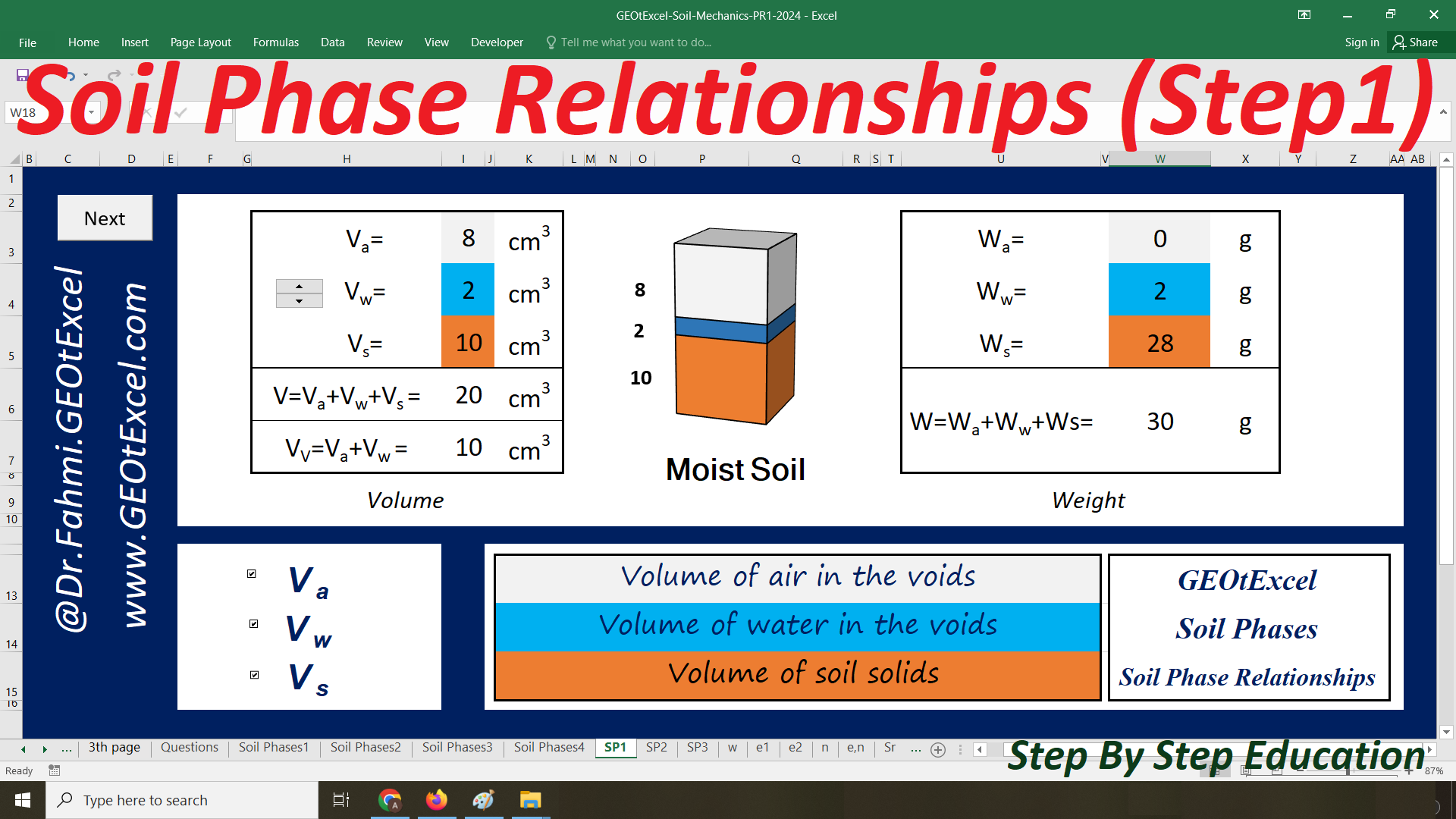
The weight of the air is negligible
Weight of water
Weight of soil solids
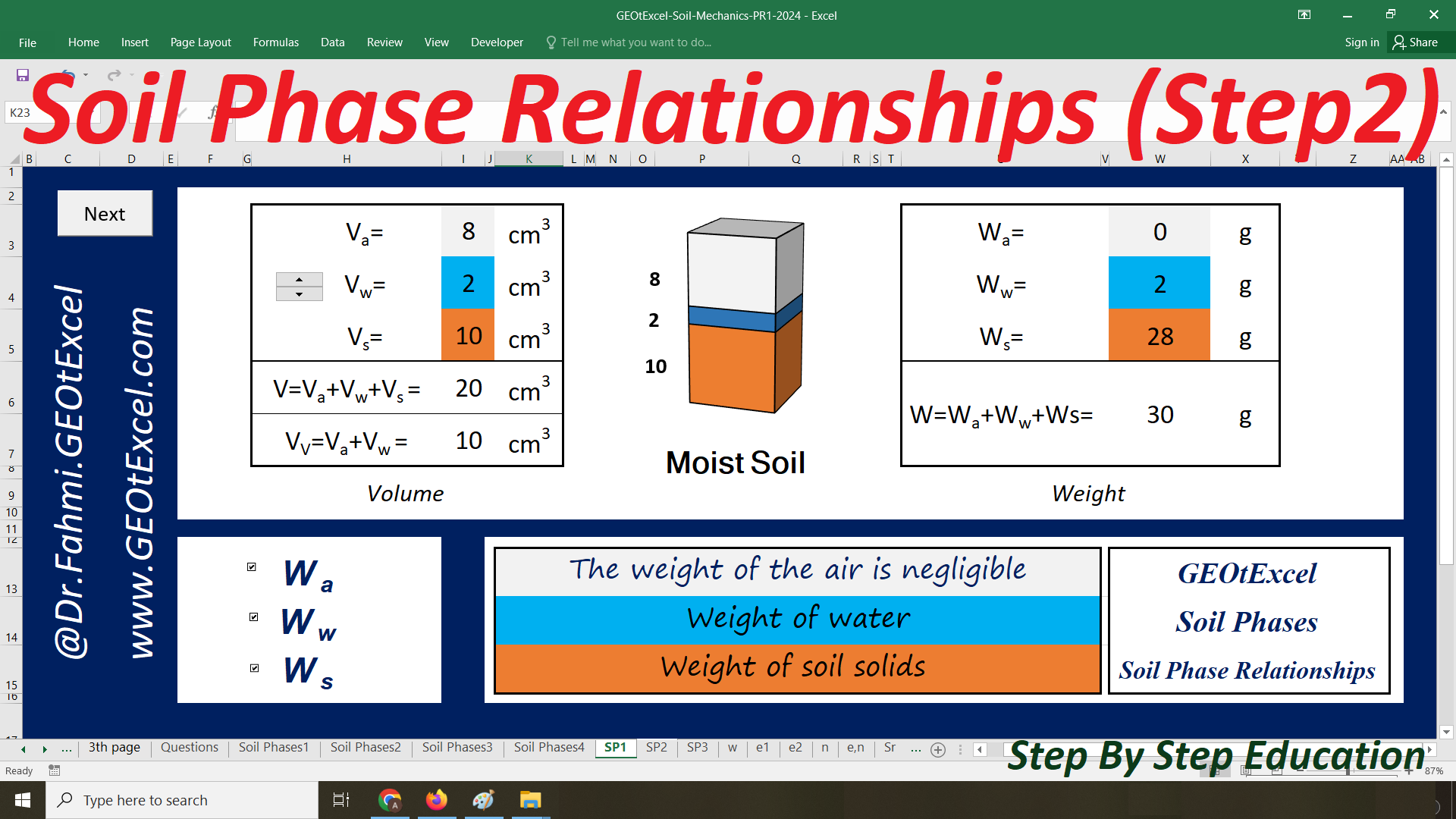
Total Volume
Volume of voids
Total Weight
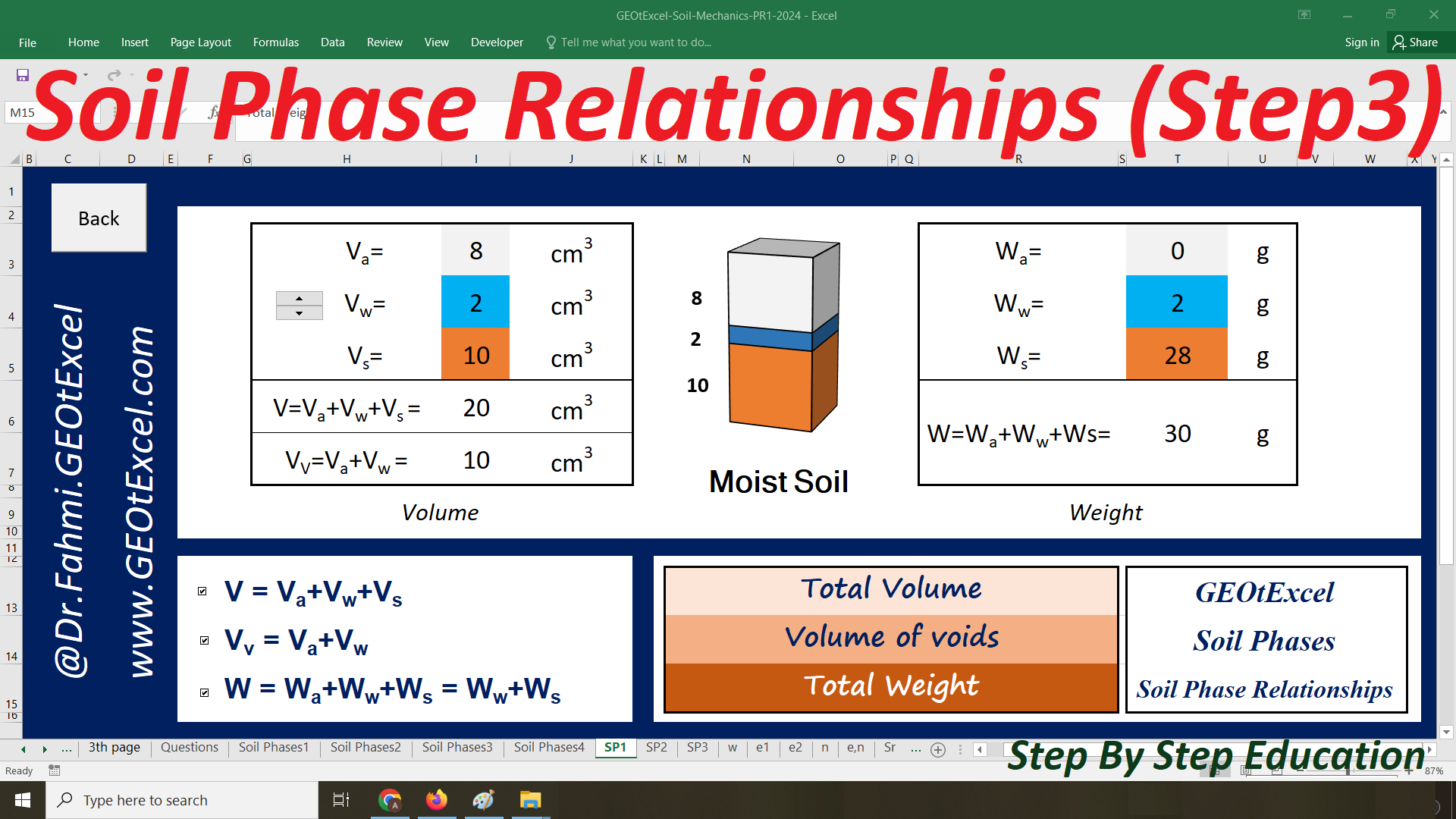
The water content (moisture) represents the proportion of water weight to solid weight
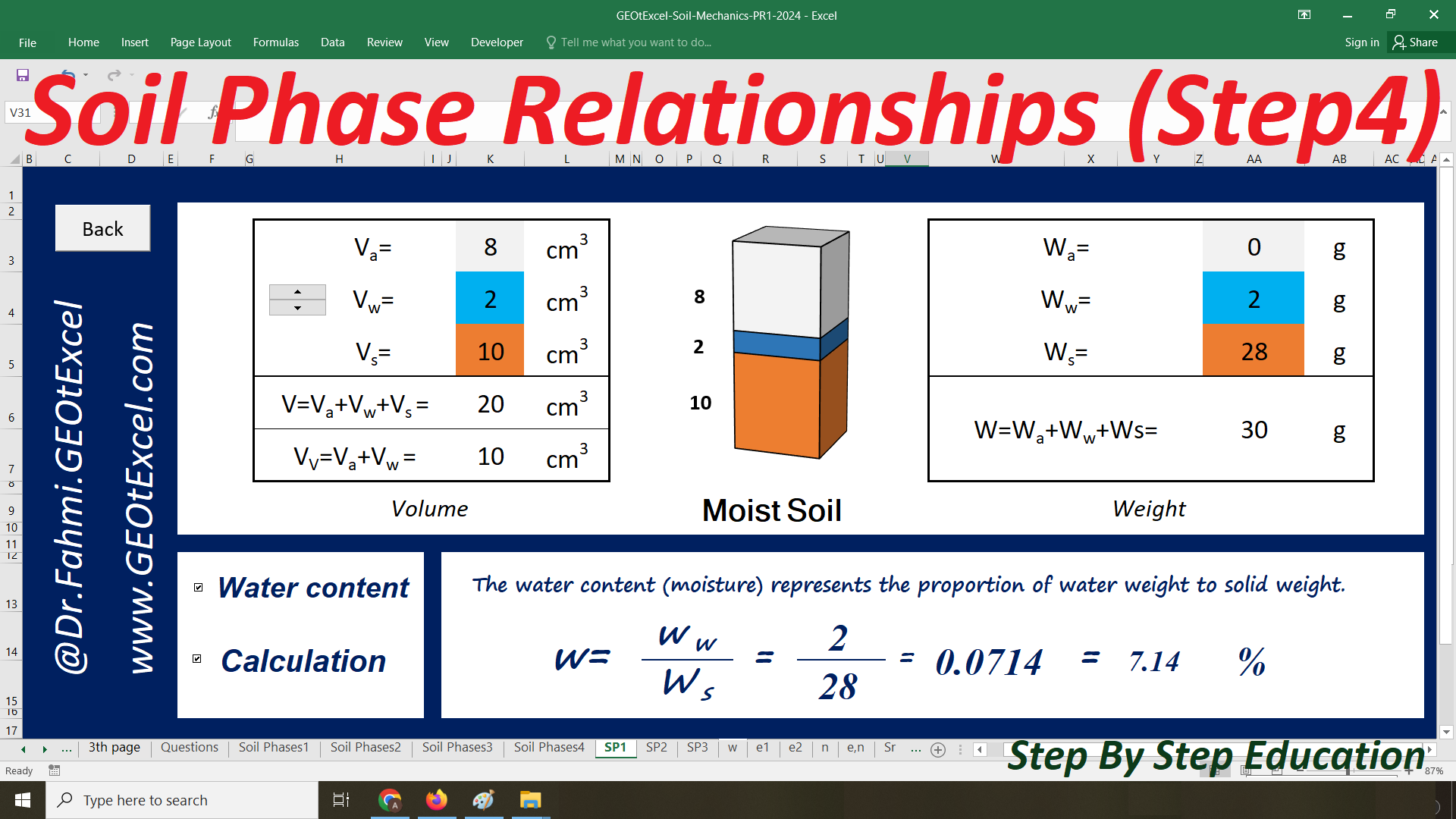
The void ratio represents the proportion of void volume to solid volume

The porosity represents the proportion of void volume to total volume

The porosity represents the proportion of void volume to total volume
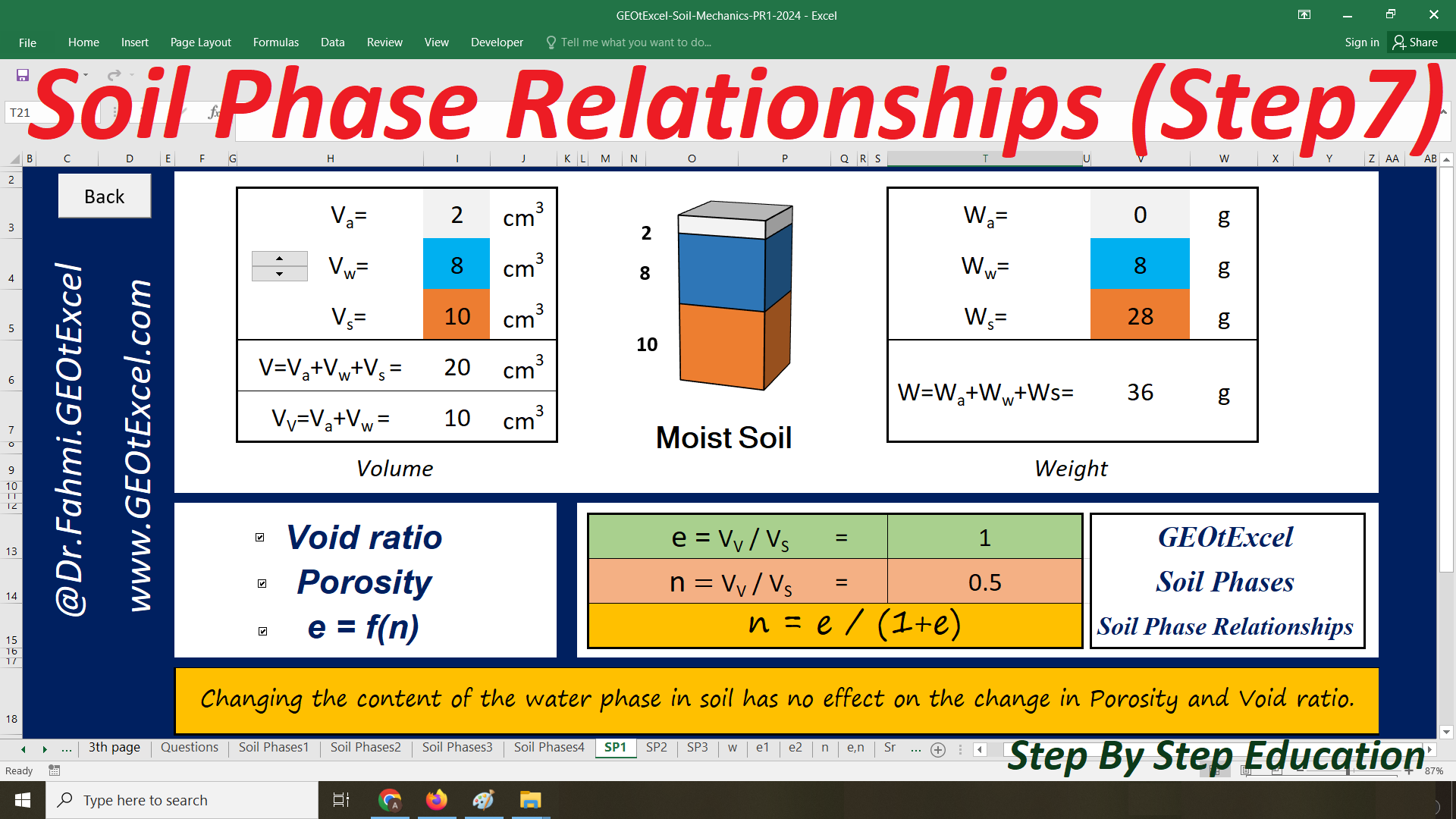
The saturation rate represents the proportion of water volume to void volume
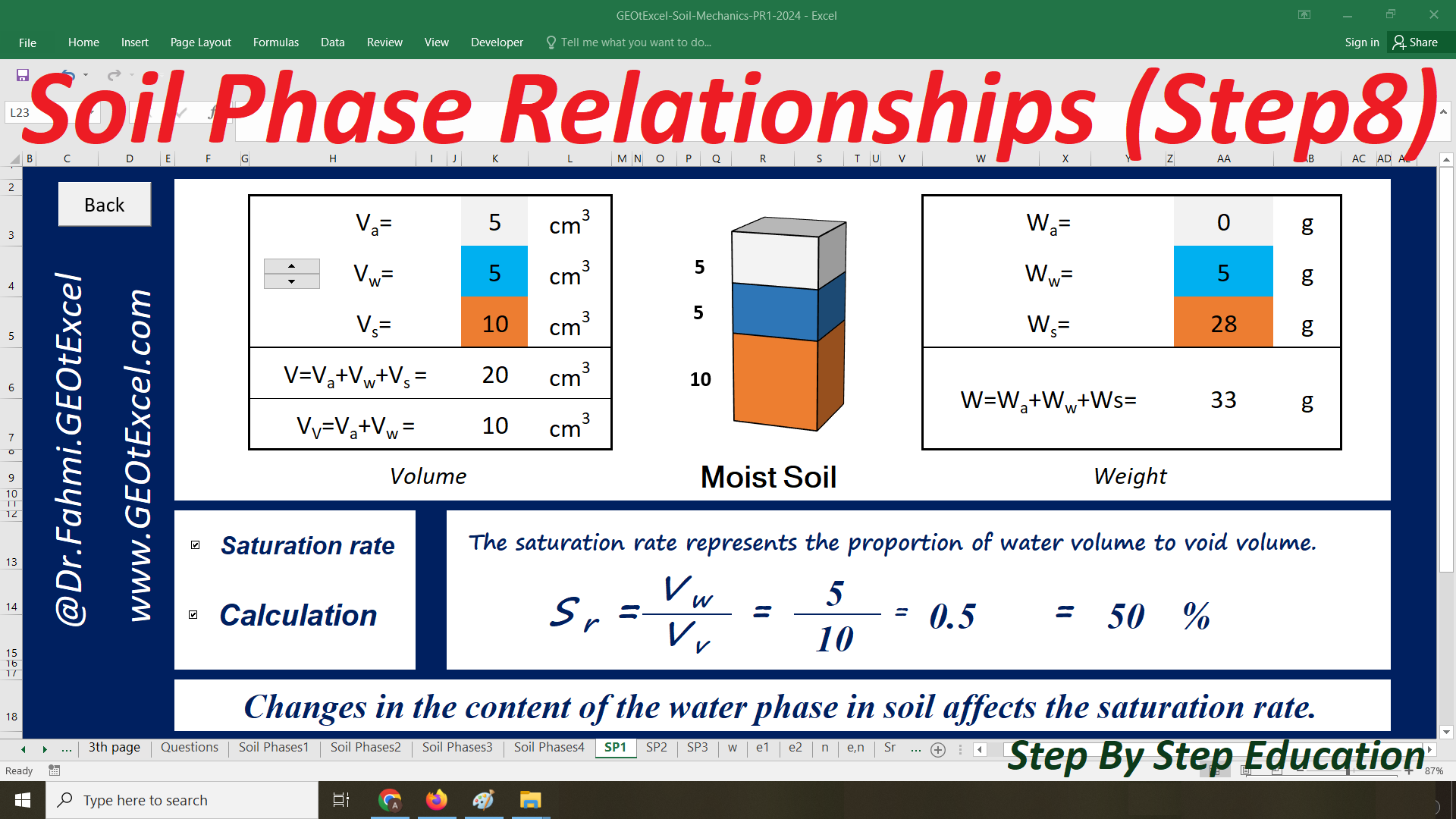
The air content represents the proportion of air volume to void volume
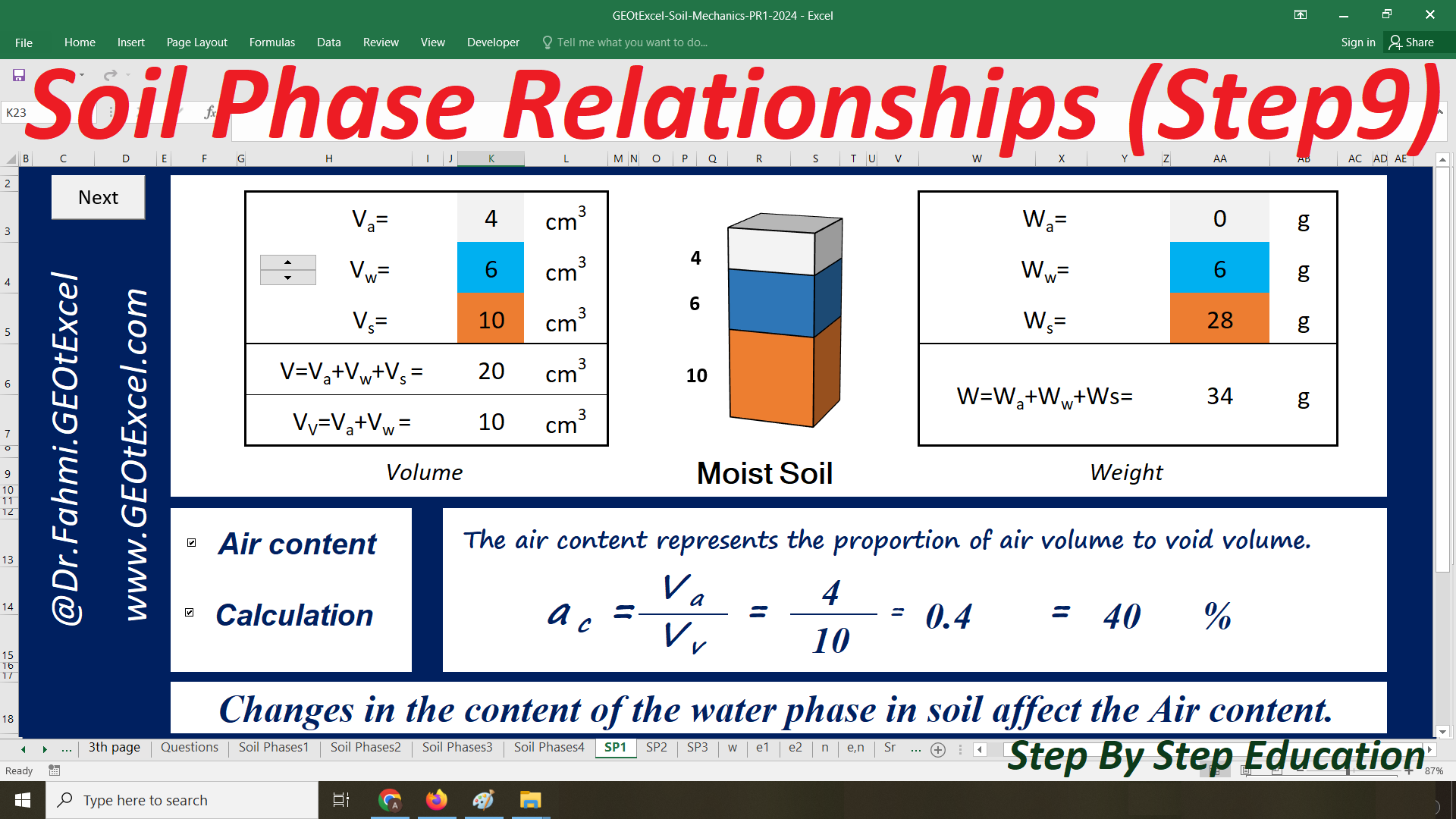
The percentage air voids represents the proportion of air volume to total volume
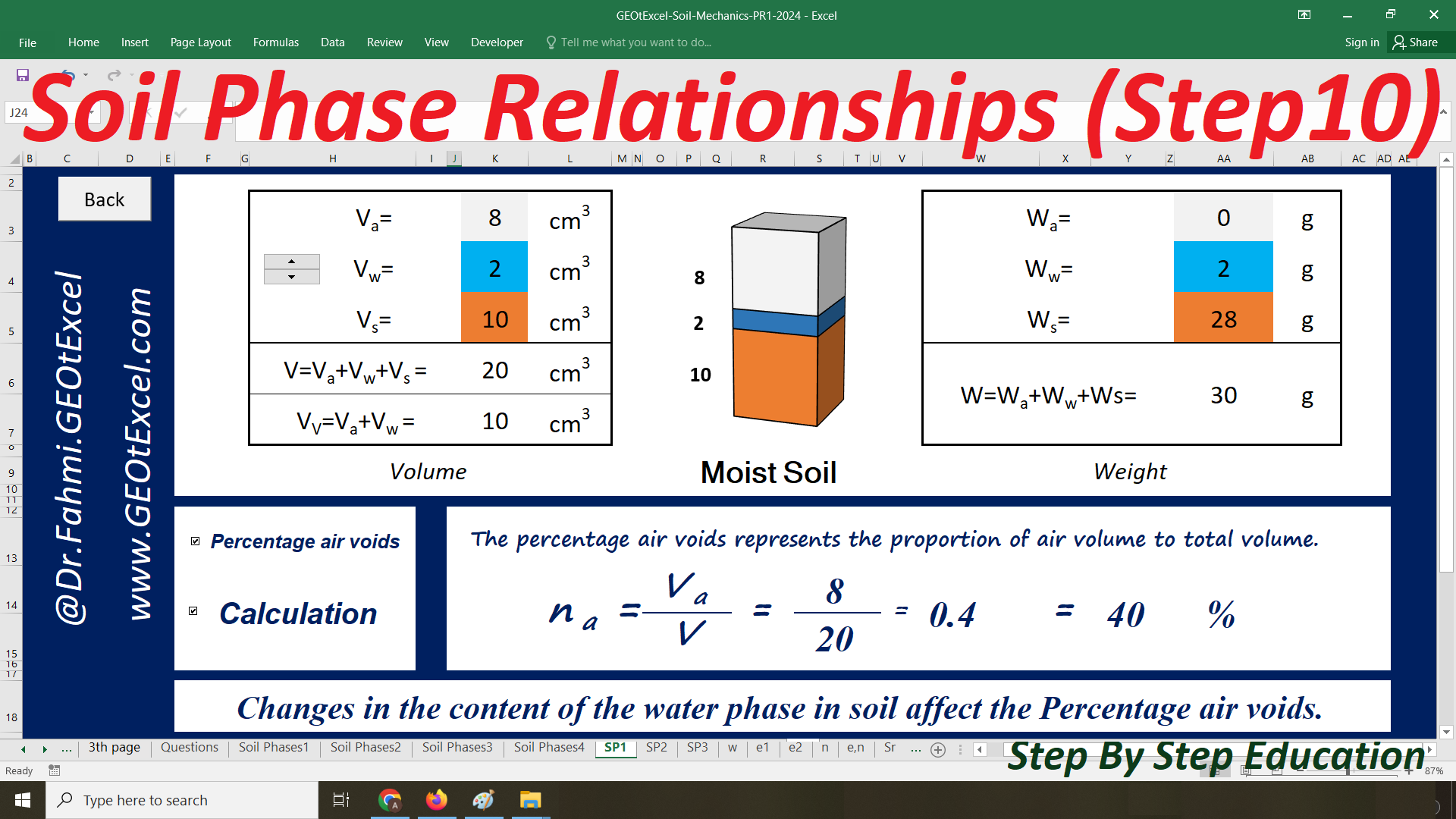
The weight of 1 cubic centimeter of water is 1 gram

The weight of 1 cubic centimeter of air is negligible
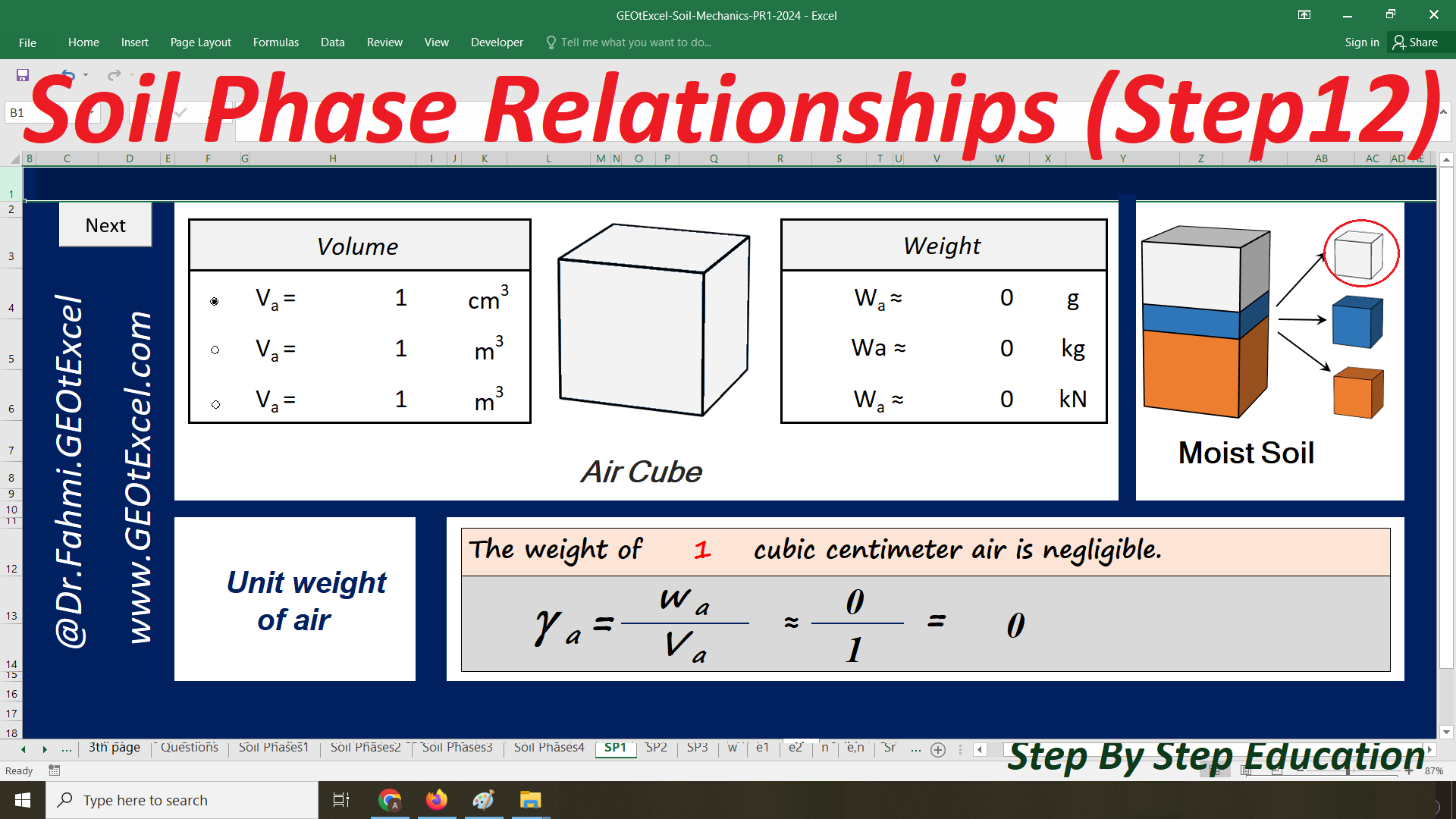
The weight of 1 cubic centimeter of the clay is 2.72 grams (in this example)

Specific Gravity or Relative density of soil solids
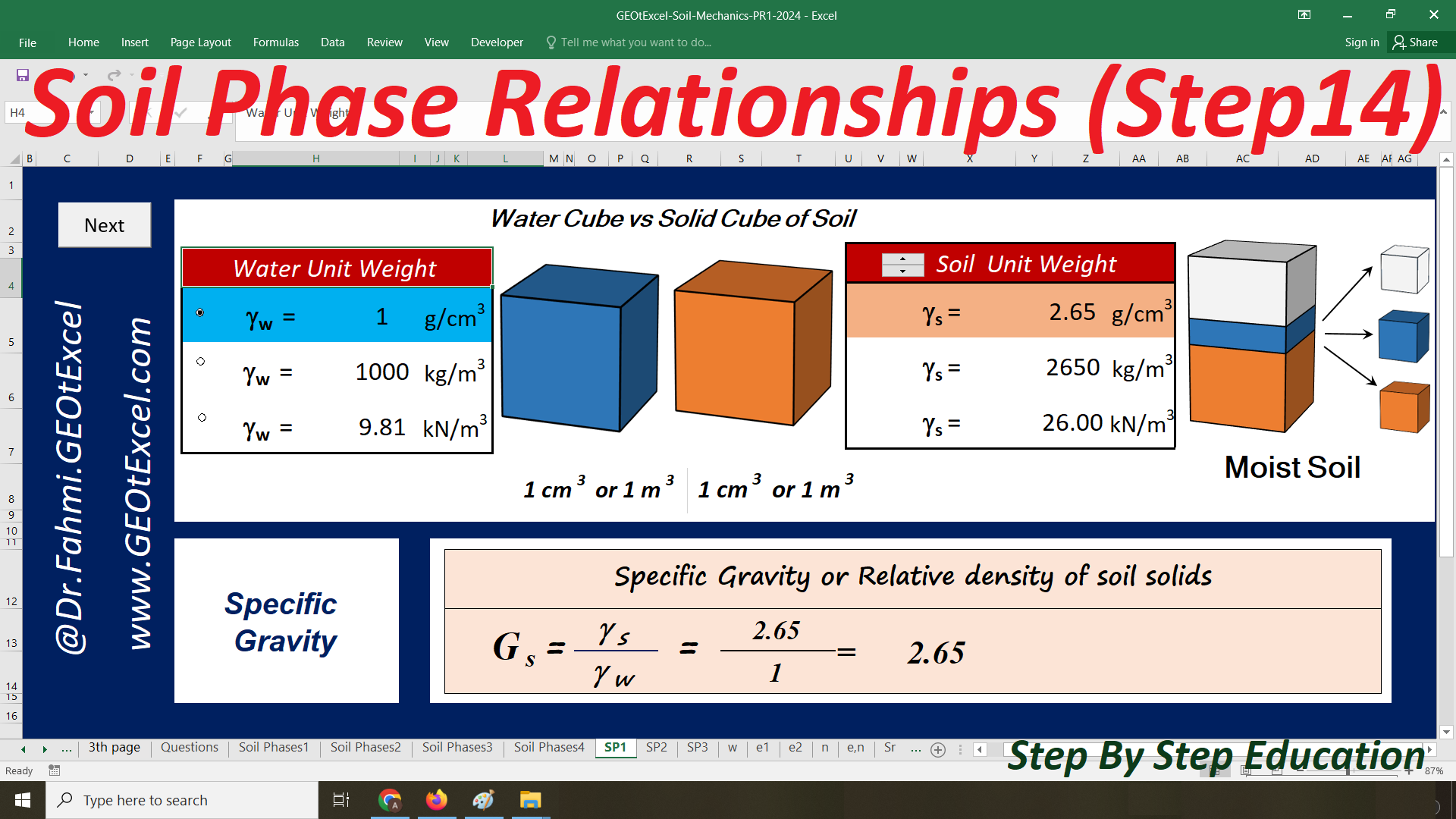
Specific Gravity or Relative density of soil solids
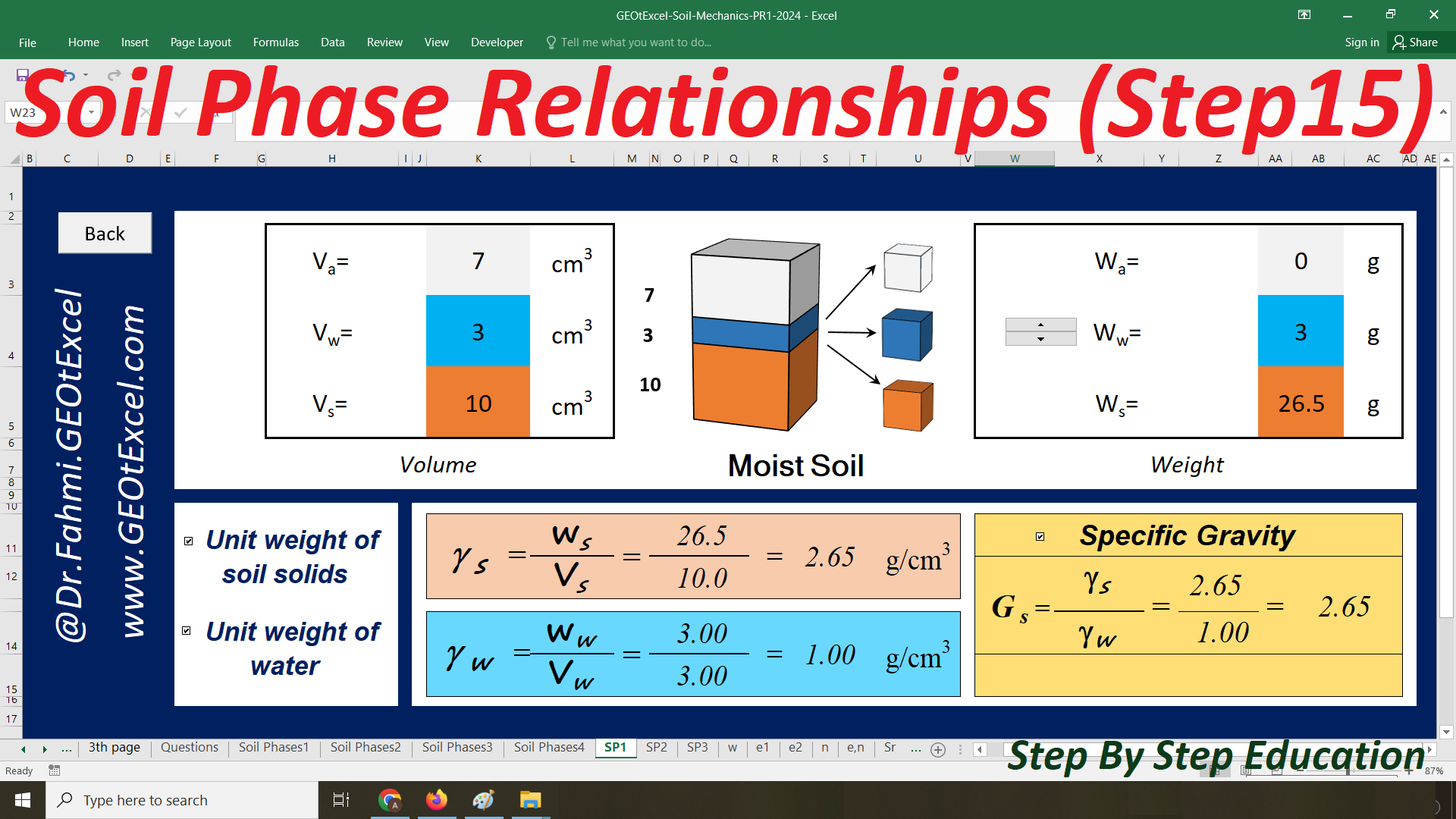
Phase 1: Unit weight of air
Phase 2: Unit weight of water
Phase 3: Unit weight of soil solids
3-Phase Soil: Unit weight
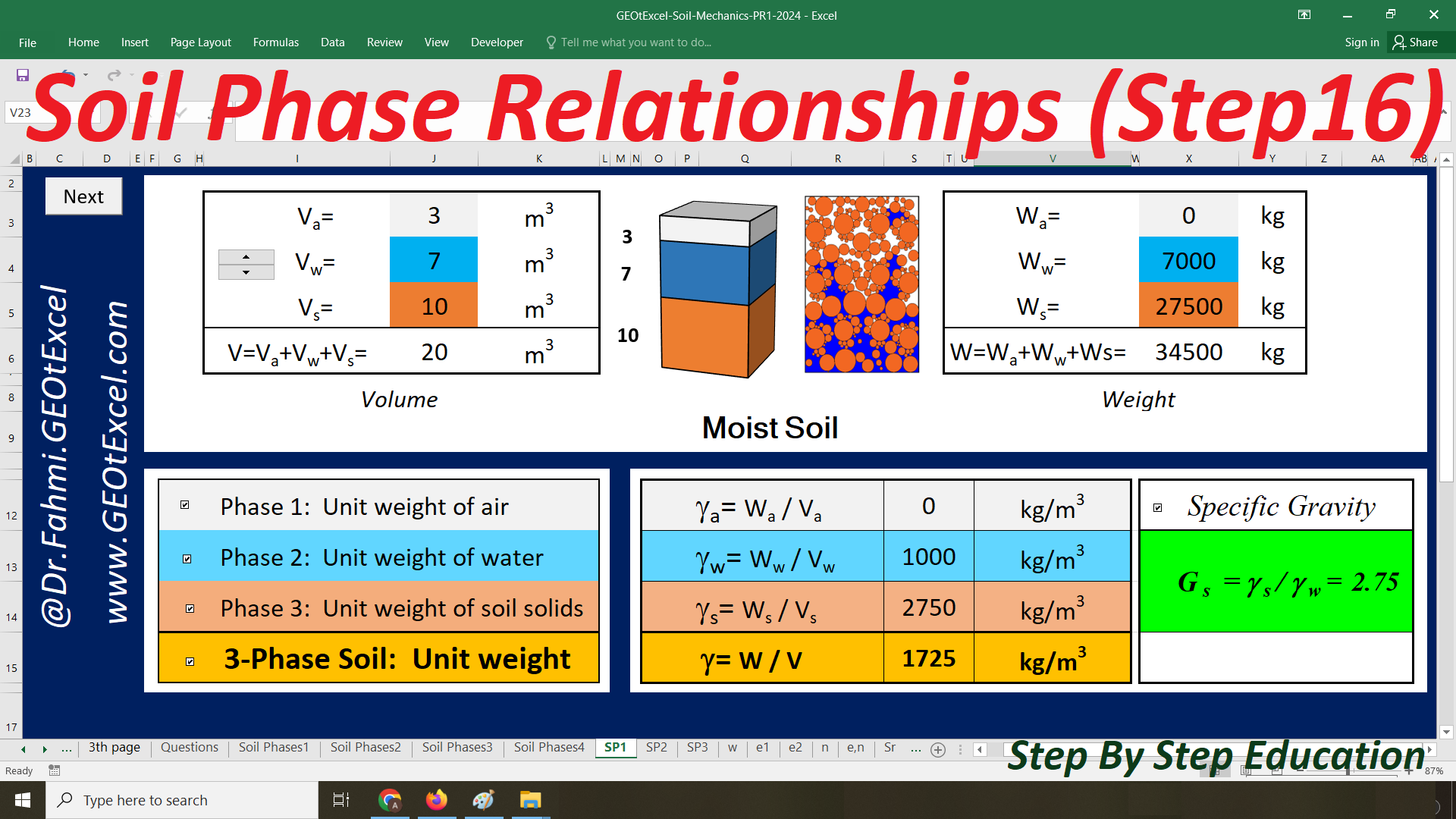
Dry Unit Weight
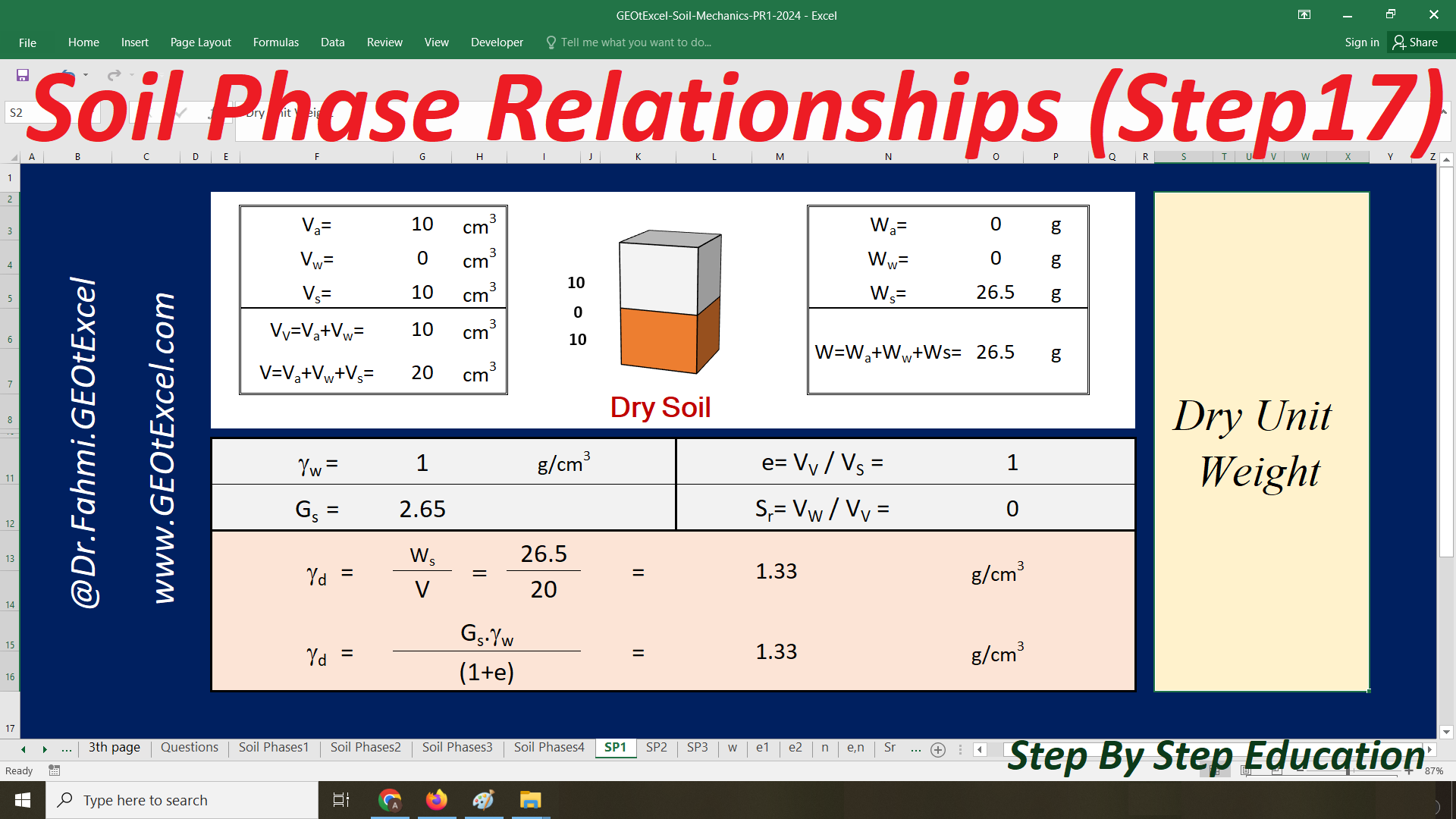
Moisture Unit Weight
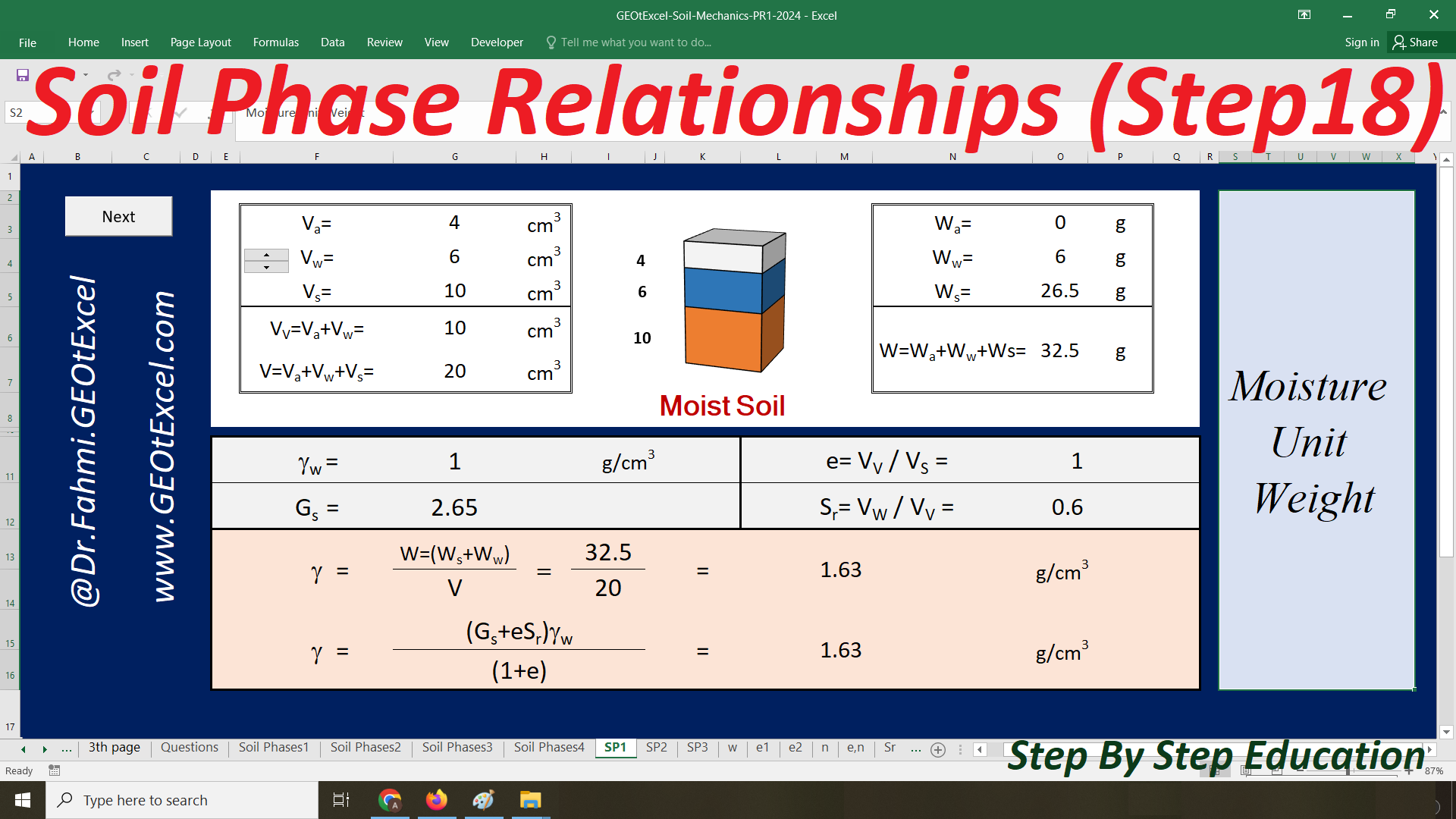
Saturated Unit Weight
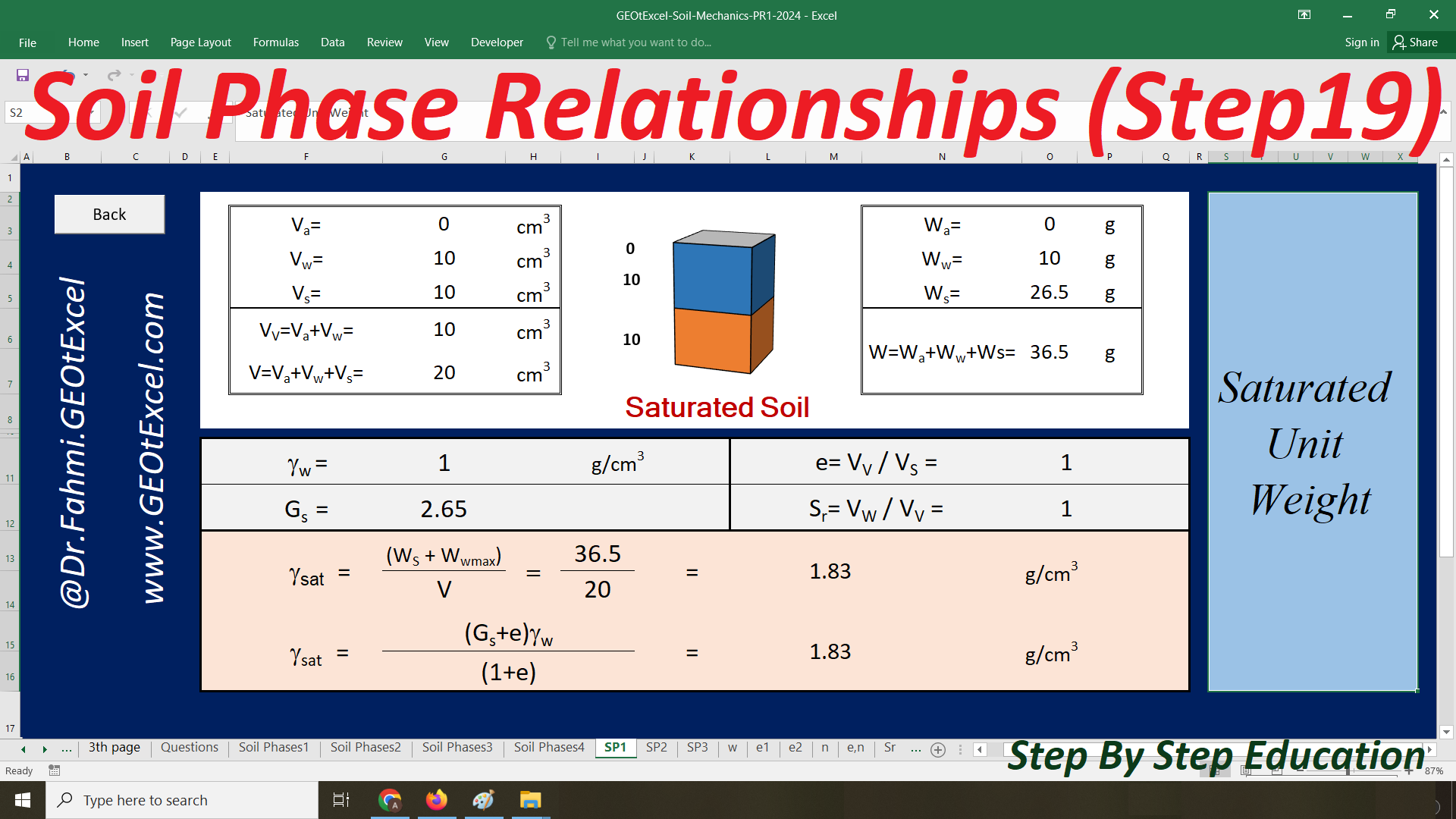
Dry unit weight
Moisture (total) unit weight
Saturated unit weight
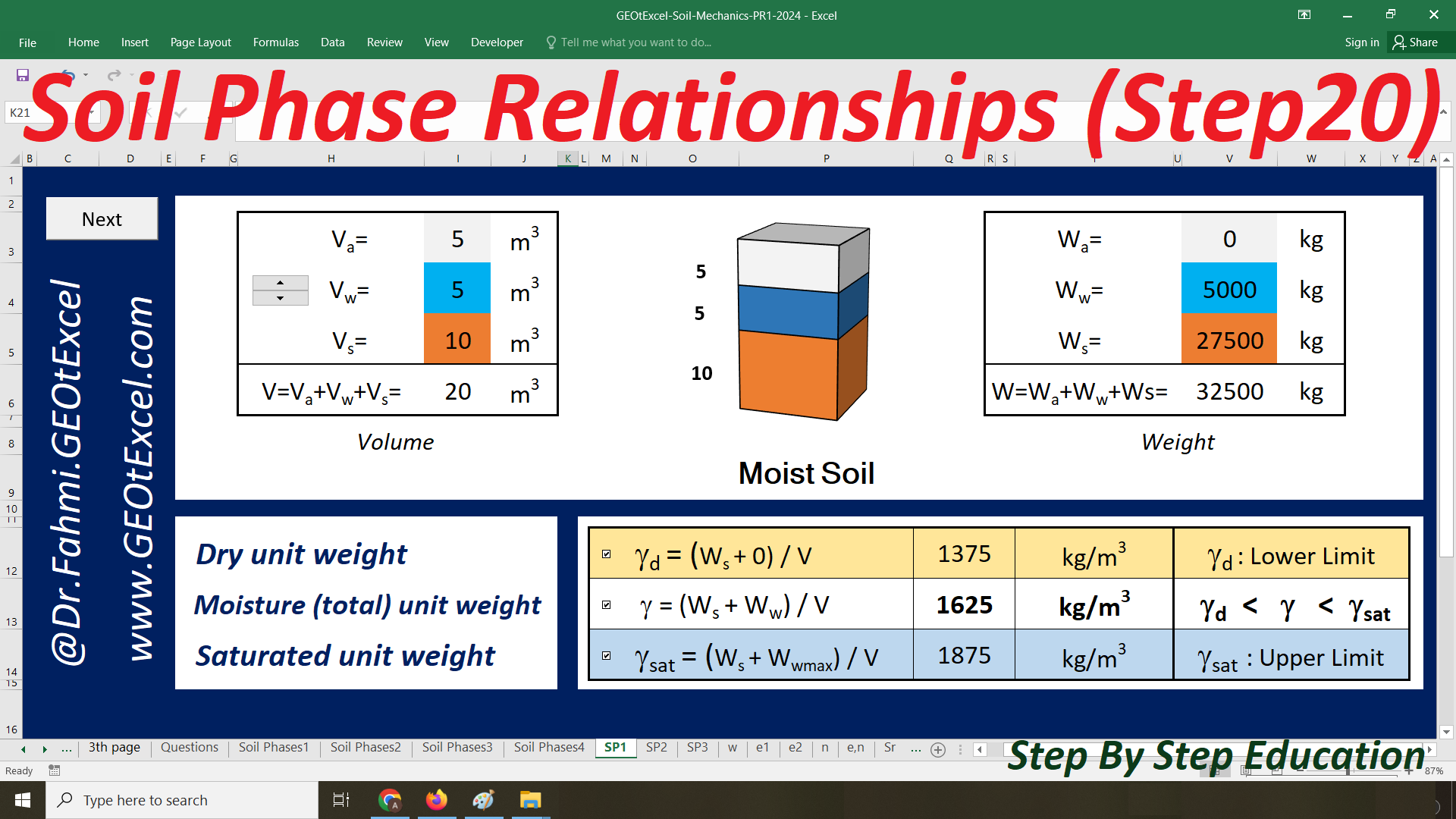
w.Gs=Sr.e
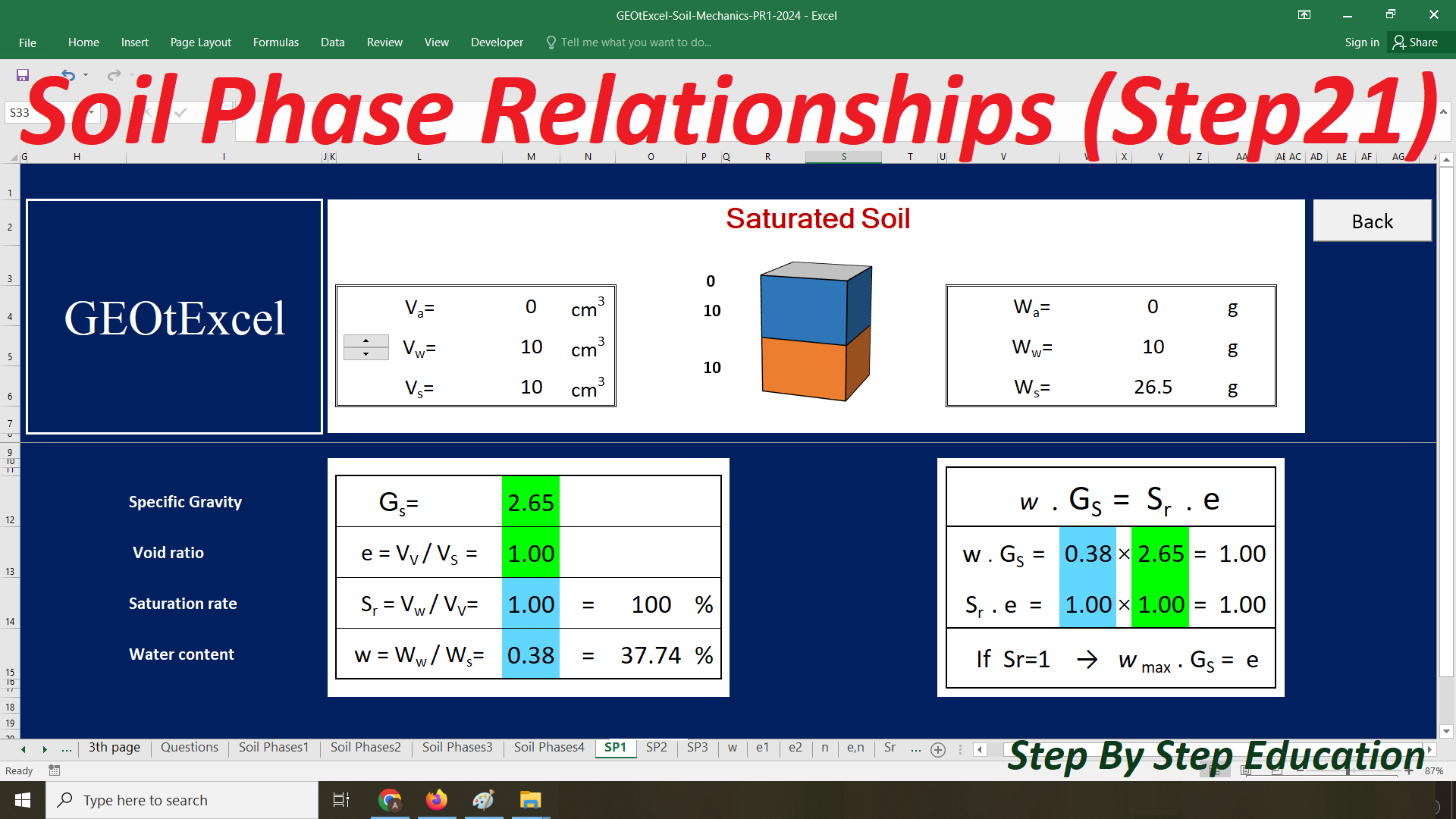
Dry unit weight & Moisture (total) unit weight Relationship
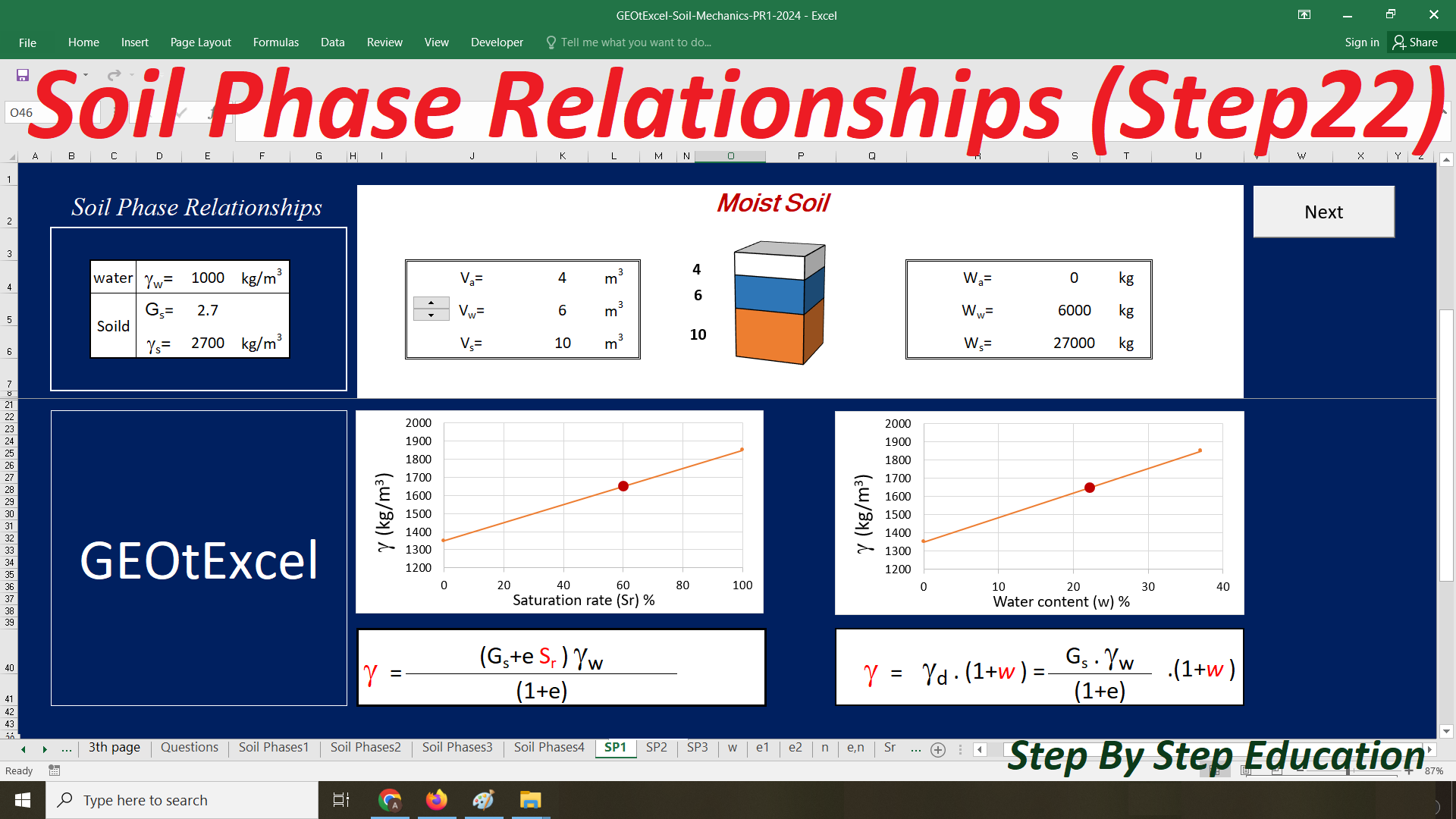
✅ Instagram Page Address:☑ https://www.instagram.com/academy.dr.fahmi
✅ Excel Spreadsheets for Soil Mechanics & Foundation Engineering
✅ Geotechnical Excel Programs & Lectures
https://www.youtube.com/@Dr.Fahmi.GEOtExcel
Designed by Dr. Ahmad Fahmi
Mohr-Coulomb Failure Criterion: Conceptual and Illustrative Calculations Using Excel Spreadsheet
Mohr-Coulomb Failure Criterion
Watch the Video on Our YouTube Channel (in English)
The Mohr-Coulomb failure criterion is a fundamental concept in geotechnical engineering that describes the shear strength of soils based on cohesion and internal friction angle. It defines the conditions under which soil will fail under stress, combining normal and shear stresses on a failure plane. Using Excel spreadsheets, engineers can perform illustrative calculations by inputting parameters like cohesion, friction angle, and stress values
https://www.youtube.com/@Dr.Fahmi.GEOtExcel
Designed by Dr. Ahmad Fahmi
How to effectively learn the concept of "Stress Bulb" using Excel spreadsheets
Stress Distribution in Soil: Stress Bulb: Boussinesq's Method (Point Load)
Watch the Video on Our YouTube Channel (in English)
Stress distribution in soil due to a point load can be analyzed using Boussinesq's method, which provides a way to calculate how stresses spread within a soil mass. The concept of a "stress bulb" represents the area beneath the surface where the stress decreases with depth and distance from the point of load application. Boussinesq’s method assumes an elastic, isotropic, and homogeneous medium, and it helps in visualizing how vertical stress from a surface load disperses in a bulb-like pattern, with higher stresses near the load and diminishing stresses as the depth and lateral distance increase.
https://www.youtube.com/@Dr.Fahmi.GEOtExcel
Designed by Dr. Ahmad Fahmi
Understanding Soil Phase Relationships Using Excel Spreadsheets
Understanding Soil Phase Relationships: Problem and Illustrative Solution
Watch the Video on Our YouTube Channel (in English)
Grasping the relationships between soil’s different phases is vital in geotechnical engineering and soil science. These phases—solid particles, water, and air—interact in ways that deeply influence key soil properties, such as density, porosity, and moisture content. The balance and interaction of these phases dictate how soil will perform under various conditions. By studying these relationships, engineers can more precisely predict soil behavior, which is critical for designing and building stable, safe structures.
https://www.youtube.com/@Dr.Fahmi.GEOtExcel
Designed by Dr. Ahmad Fahmi